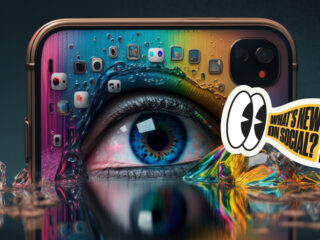Loved01, the unisex skincare range from singer John Legend which launched last month in the US, is just one recent example of a new swathe of gender-neutral perfume, fashion and beauty care brands revolutionizing the world of marketing.
Orienting themselves in a non-binary direction, these brands are placing inclusivity at the forefront of product development to come up with unisex products that, by default, will appeal to a broad swath of consumers.
It’s not an entirely new concept, of course – Calvin Klein broke the mould with CK One back in the 90s – but the fresh speed at which the landscape is evolving is notable as growing numbers of beauty and fragrance players take a leaf out of the fashion industry’s playbook and move towards a more minimalist and genderless aesthetic.

But surely it’s not only these categories that stand to benefit from a degendering of their products and marketing. Couldn’t / shouldn’t many more products actually be framed as genderless today? Cars, Banks, Insurance – women and men both need and use the products, and yet in these categories at least, men, by and large, remain the default target audience. (Case in point: new research on automotive marketing from my agency reveals that 82% of British women cannot name a single car company they believe does a good job of advertising to women – and 8 out of 10 believe car adverts are mainly aimed at men).

Typically when women do feature in marketing communications from these traditionally more male categories, they tend to be portrayed in stereotypical ways (in fact, our research shows eight out of ten UK women feel they’re stereotyped in ads, and, worryingly, almost a quarter feel this stereotyping happens all the time). Advertising tropes and painful clichés leave women feeling unseen by those marketers, and as a result, brands end up underserving a potentially lucrative consumer base.
But while we talk a fair bit about stereotypical portrayals of women in marketing communications, we don’t as often consider the gendered words we consciously or unconsciously use in our comms. The reality is that many of the damaging gender norms that marketers reflect and reinforce are not so much in the visuals but hidden in the ingrained language brands use to speak to women.

Words matter. Language is one of the most powerful means through which sexism and gender discrimination are perpetrated and reproduced. And although I think you’d have to go back at least five years to find examples of overtly sexist ad copy in the UK (hello Co-op), there are plenty of examples where a blinkered (aka traditionally ‘masculine’) choice of words, mixed with a stereotypical view of a category, results in marketing that, well, misses its mark.
A 2018 study by Autotrader found that women – who, let’s remember, influence up to 80% of auto purchases – are actively turned off by ‘hyper-masculine’ car adverts, particularly those for luxury cars or SUVs. (Interestingly, but not surprisingly, given the new understanding of evolving masculinities, the majority of male respondents in the survey also said they found the stereotypical masculinisation of car ads off-putting). Yes, there are the high-octane car rides, rugged landscapes and moody skies – but less obvious, yet even more contrived, is the copy sprinkled with references to power, fearlessness and domination.

The point here is that we often don’t think about the casual sexism hidden in everyday language, which inevitably risks seeping through into marketing communications. Take, for example, the idea that men who labour their point are described as ‘passionate’, but women who behave the same way are considered ‘hysterical’. Or men who know what they want and lean into it are ‘assertive’, but women with the same behaviour are seen as ‘pushy’. And then, of course, there’s the ultimate double standard of ‘boss’ vs ‘bossy’! (On a side note, if you’re inclined, feel free to head over to CPB London’s latest International Women’s Day campaign, which explores precisely this theme.)
Individually, each of the above instances may seem relatively minor but put together in a ‘death by a thousand cuts’ sort of way, it’s clear that language can perpetuate destructive and demeaning depictions of femaleness. And because words and phrasing are used so blithely by most of us every day, this kind of discrimination or sexism remains hidden, albeit in plain sight, and as a result, often goes unchecked.
But check our language we must (and a shout out here to the copy advice team at the Advertising Standards Authority, who can help ensure words and phrasing won’t run counter to their 2019 gender stereotyping code). After all, for marketers, language isn’t just a means of communication – it’s also one of our first chances to leave a lasting, positive impression on our target audience.





